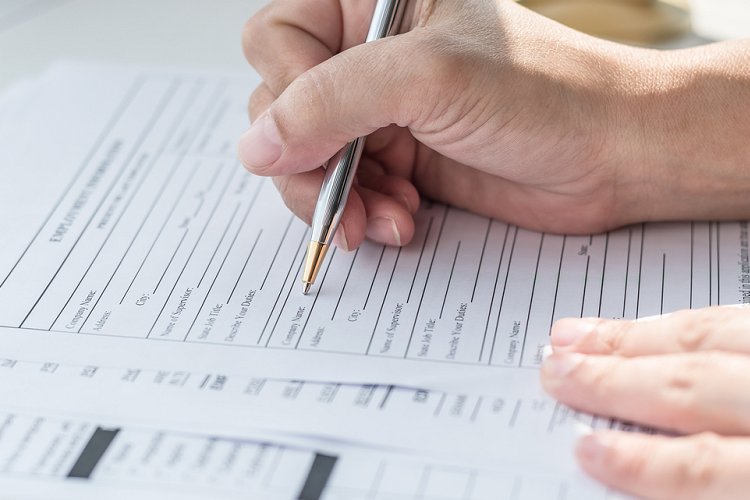Can I Use a Trade Mark That’s Not Registered?

As a general rule of thumb, it’s not recommended to use an unregistered trade mark. This is for a number of reasons. For example, it is far more difficult to enforce an unregistered trade mark against unauthorised users because doing so requires a large volume of evidence to prove that the unregistered trade mark has a reputation in the relevant territory. Whereas if you have a registered trademark, it’s far more simple to enforce it. You can just point to your registration, assuming that the third party’s using the same or a very similar mark in relation to similar goods and/or services. You do not have to prove any sort of reputation when you have the registered trade mark.
Another reason why using a registered trade mark rather than an unregistered trade mark is that the registration effectively acts as a signpost because it’s published on a public register. It can therefore be searched and found by others that might be considering use of a similar trade mark for similar goods/services such that it’s far easier for them to know the trade mark is protected and that they shouldn’t use it.
This means that third parties that are trying to do the right thing and searching the trade mark register to ensure that they’re not about to go out there and use a trade mark that is owned by someone else will be able to find your registration easily.
However, if you haven’t registered your trade mark, it could be harder to find. Not necessarily impossible, as it is possible to find unregistered trade marks in use by doing some further marketplace searching.
The Importance of Registering Your Trade Mark
Some people, rightly or wrongly, will assume that any trade mark that exists out there would be registered, which isn’t necessarily true. Or, that it is only 100% protected when registered. This could lead to others, believing that trade mark is available, to obtaining protection for a trade mark which you used first but didn’t register. You then have the issue of dealing with that conflict on the trade marks register as someone else filed before you did. Taking steps to overcome that obstacle can be costly and time consuming. Further, as a prior user of an unregistered mark you can overcome later trade marks this does not clear those from the database. This means you may end up with someone else using a very similar trade mark to your own with little recourse to stop them. It’s certainly simpler, and more cost effective, to ensure you register your trade mark first.
Can I Use a TM Symbol if My Brand Isn’t Registered?
Most have seen various ‘symbols’ that relate to intellectual property. For example ® ™ and © are fairly common. What do they mean though?
© relates to copyright, which is different to trade marks. We have seen people put this next to brand names to try and protect them. Copyright does not protect brand names, as these fall to trade mark territory so placing this symbol next to a name will not protect that name.
™ can be used to represent a trade mark in use. This includes brands/trade marks that are being used before registration. This can act as a deterrent as others may assume it means the name is protected. It does not convey any true ownership to that brand though nor provide legally enforceable rights.
The ® symbol however reflects that the trade mark has been registered by the government trade marks office. This symbol can only be used with registered trade marks; it’s an offence to use this against an unregistered trade mark.
What Happens if I Use an ‘R’ Symbol With an Unregistered Trade Mark?
This is an offence under the Trade Marks Act 1995, as is operating in Australia.
Section 151 of the Trade Marks Act provides that a person must not make a representation to the effect that a trade mark is a registered trade mark, unless the person knows or has reasonable grounds to believe that the trade mark is registered in Australia. And that carries a penalty of 60 penalty units. This means a potential penalty or fine of just short of $10,000 to suggest (including through use of the R symbol) that your trade mark is registered when it’s not.
Why Do People Use Unregistered Trade Marks?
Often this is a case of people not necessarily knowing about trade marks, or perhaps a misunderstanding of the importance of registering your trade mark. In Australia, where we do have a first to use system where it’s legal to use an unregistered trade mark, there’s nothing necessarily wrong with using an unregistered trade mark legally, so long as it does not infringe a registered trade mark. A trade mark search is a good idea at any time, but particularly if you intend to use a brand without registration. So sometimes businesses assume that there’s no problem with doing so, and there’s no risks related to doing so. We also often see instances where people have registered their trade mark as a business name and mistakenly believe that that provides them with some sort of intellectual property protection, which it doesn’t. In fact, when you register a business name with ASIC you will be presented with a series of check boxes before even starting the application, which include making it clear that a business name does not offer such rights, and use of a business name could infringe a trade mark that is registered.
What Are the Main Risks of Using an Unregistered Trade Mark?
The main issues we see are:
- Demonstrating rights in an unregistered trade mark is far more challenging than showing you own a registered trade mark, particularly if you want to stop someone else from using the same or similar trade mark;
- Unless you are a clear first user in Australia, use of an unregistered trade mark may infringe a trade mark that is registered. Being unaware of that registration is not a defence to infringement;
- Offering licensing agreements to others to promote your goods under your brand is difficult without trade mark registration in place. You want to be able to offer licensees the assurance that you entirely own the brand so it is safe for them to promote.

